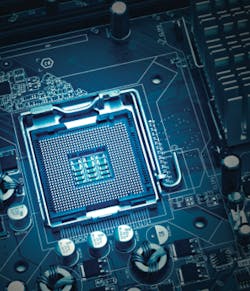What kept me writing on the topic was the clear trend I saw developing in chip design, with more and more chips being produced specifically to tackle industrial applications. At the same time, I saw an increasing number of industrial applications using multicore processors.
I have to admit, I had never been convinced that the processing options available for industrial computers would reach the level of that offered in the consumer realm...until now.
Advantech Industrial Automation Group (www.advantech.com) has recently upgraded its multifunctional PPC-6120 so that users can now install the processor of their choice. According to Advantech, users can select any fourth-generation processor—from basic Celeron processors all the way up to Intel i7 processors to meet their current application and future-proofing requirements.
The PPC-6120 is no crossover computing technology. It is clearly an industrial PC. It is a 12.1-in. five-wire resistive touchscreen panel PC that connects to devices through an integrated isolated RS-422/485 port. Extra displays using the VGA and display port can be used to extend the viewing area if needed. The PPC-6120 has an IP65 front bezel, four RS-232 and four USB 3.0 ports and dual Gigabit ports, and a PCIex4 or PCI card can be added.
Time will tell if this consumer PC approach of choosing your own processor takes off in the industrial world, but I suspect with the number of industry-specific processors being introduced by the likes of Texas Instruments (www.ti.com), Altera (www.altera.com) and Intel (www.intel.com), that it will be surprising if industry end users do not adopt this approach.
To read more about industrial embedded trends, see these other Automation World articles:
• New Processors for Industrial Use, http://awgo.to/405
• Functional Safety Microcontroller, http://awgo.to/406
• Dual-Core Microcontroller for Industrial Applications,
http://awgo.to/407
• PCI Express x1 Serial Cards, http://awgo.to/408
• Bluetooth Dual Mode System-on-Module,
http://awgo.to/409
Leaders relevant to this article:


